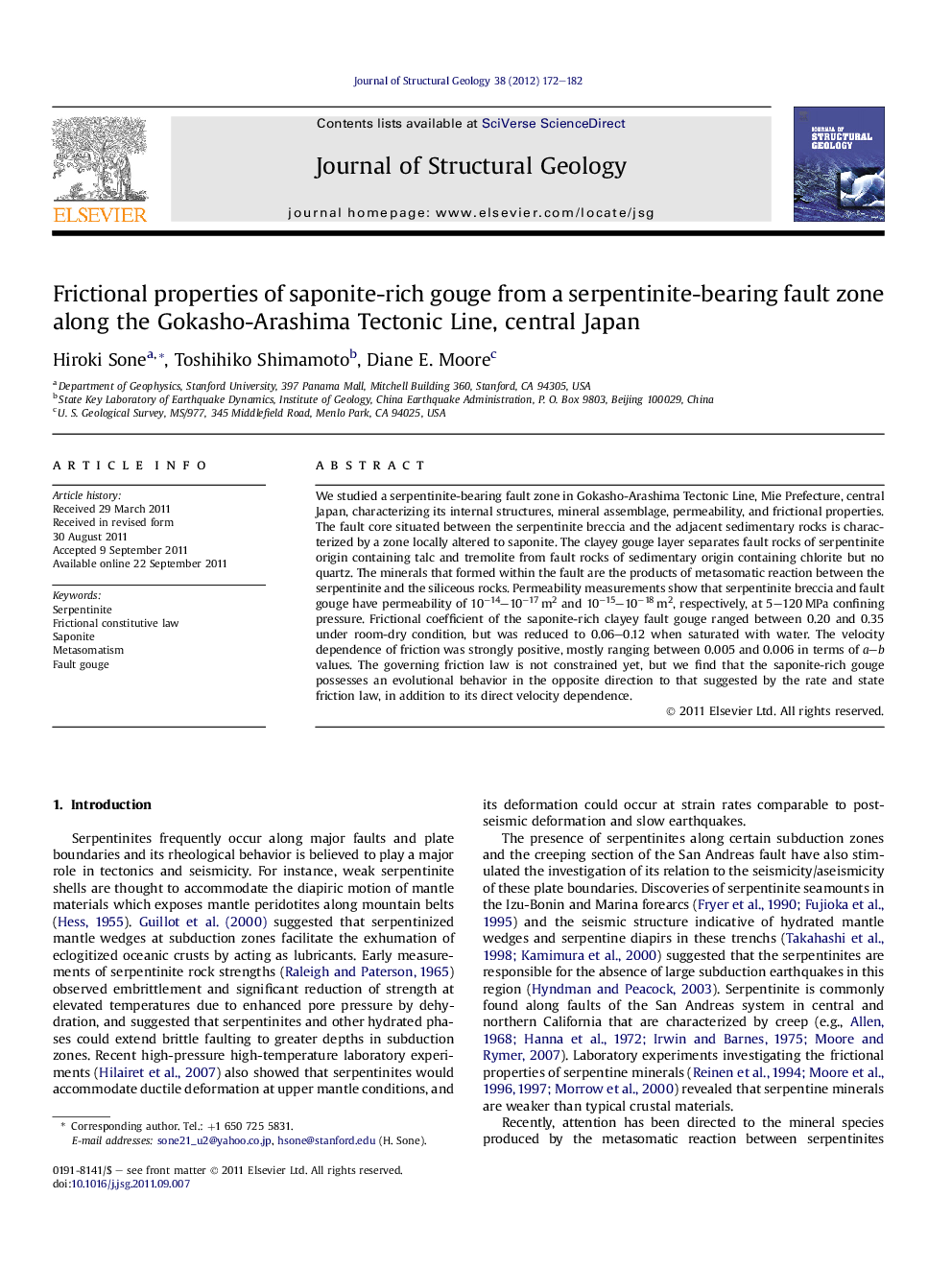| Article ID | Journal | Published Year | Pages | File Type |
|---|---|---|---|---|
| 4733275 | Journal of Structural Geology | 2012 | 11 Pages |
We studied a serpentinite-bearing fault zone in Gokasho-Arashima Tectonic Line, Mie Prefecture, central Japan, characterizing its internal structures, mineral assemblage, permeability, and frictional properties. The fault core situated between the serpentinite breccia and the adjacent sedimentary rocks is characterized by a zone locally altered to saponite. The clayey gouge layer separates fault rocks of serpentinite origin containing talc and tremolite from fault rocks of sedimentary origin containing chlorite but no quartz. The minerals that formed within the fault are the products of metasomatic reaction between the serpentinite and the siliceous rocks. Permeability measurements show that serpentinite breccia and fault gouge have permeability of 10−14–10−17 m2 and 10−15–10−18 m2, respectively, at 5–120 MPa confining pressure. Frictional coefficient of the saponite-rich clayey fault gouge ranged between 0.20 and 0.35 under room-dry condition, but was reduced to 0.06–0.12 when saturated with water. The velocity dependence of friction was strongly positive, mostly ranging between 0.005 and 0.006 in terms of a–b values. The governing friction law is not constrained yet, but we find that the saponite-rich gouge possesses an evolutional behavior in the opposite direction to that suggested by the rate and state friction law, in addition to its direct velocity dependence.
